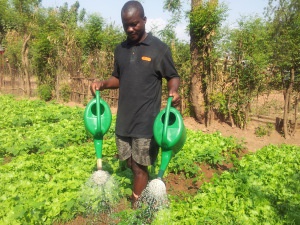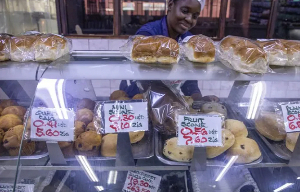- Home - News
- TWI News | TV
- Polls
- Year In Review
- News Archive
- Crime & Punishment
- Politics
- Regional
- Editorial
- Health
- Ghanaians Abroad
- Tabloid
- Africa
- Religion
- Election 2020
- Coronavirus
- News Videos | TV
- Photo Archives
- News Headlines
- Press Release
Business News of Wednesday, 15 April 2015
Source: B&FT
Shylocks take over agric financing
The Ghana Trade and Livelihood Coalition (GTLC) has expressed worry over the control of agric financing by Shylocks, which they say has exposed farmers to exploitation.
The Coalition contends that unwillingness of banks and other financial institutions to advance credit facilities to smallholder farmers has entombed the farmers in a tight corner, where they are compelled to access loans from private persons such as loan-sharks, traders and family members at very high interest rates.
According to the 2013 Agro-Policy Performance Barometer Report by the Ghana Trade and Livelihood Coalition, private persons represent about 67.8% as source of credit to smallholder farmers; non-banks (micro-finance, savings & loans and NGOs) constitute 27%; banks (commercial and rural banks) make up just 5.2% of lenders to smallholder farmers.
It explained that “stringent conditionality”, including collateral security and bureaucracy among other things, discourages small-scale farmers from patronising loan facilities at banks, thereby forcing them into resorting to individuals who then take undue advantage.
The report stated that the trend has the tendency to make it very difficult for small-scale farmers to access certain government credit facilities when those financial supports are channeled through the banks.
Ghana’s agriculture is dominated by small-scale producers, with an average farm size of about 1.2 hectares. Smallholder farmers account for about 80% of domestic production, and any disincentive practices could endanger the country’s food security.
This came to bear at a consultative workshop held in Sunyani for various agricultural stakeholders including farmers, representatives of the Ministry of Food and Agriculture, Civil Society Organisations, and the Ministry of Trade and Industry. The participants were drawn from the Ashanti, Brong Ahafo and Volta Regions.
It was also noted that the artificial gap between smallholder farmers and agric extension officers continues to widen. The ratio of extension agents and farmers has increasingly broadened; Jana in the Savelugu Nanton district was cited as a case study, where the ratio suggests that 1,700 farmers have access to only one extension officer.
In another breath, most farmers who were able to access extension advice did not put them into practice. In communities like Afife, Akomadan and Kade, more than half of the farmers were reported to have received extension advice but could not utilise it for varied reasons.
The report indicated that rice farmers, for example, were unable to access the needed machinery and tools, especially harrows and harvesters, to help them translate the advice into practice; others were also reluctant to change from their traditional and ingrained farming practices to apply modernised agronomic methods.
It is also captured in the report that market women remain the major source of market for smallholder farmers, particularly those into tomato and rice cultivation. “Market women control about 82.8%; 12.6% goes to processing companies while 2.1% of the produce is channeled to National Food Buffer Company (NAFCO).”
The situation makes market women the major determinant of prices -- regardless of cost of production and other elements which affect farmers.











